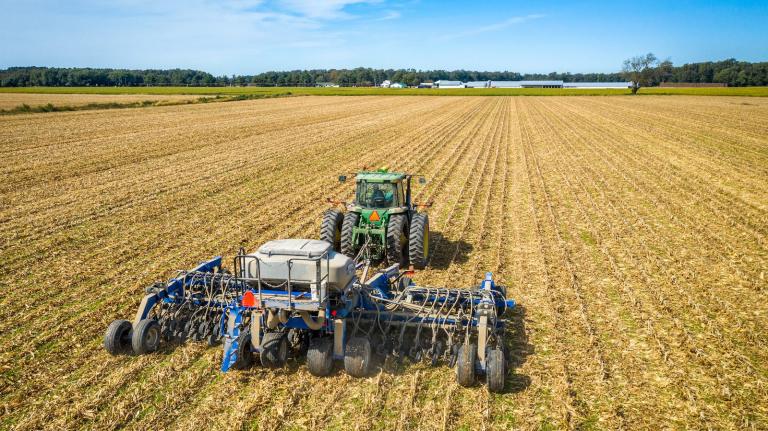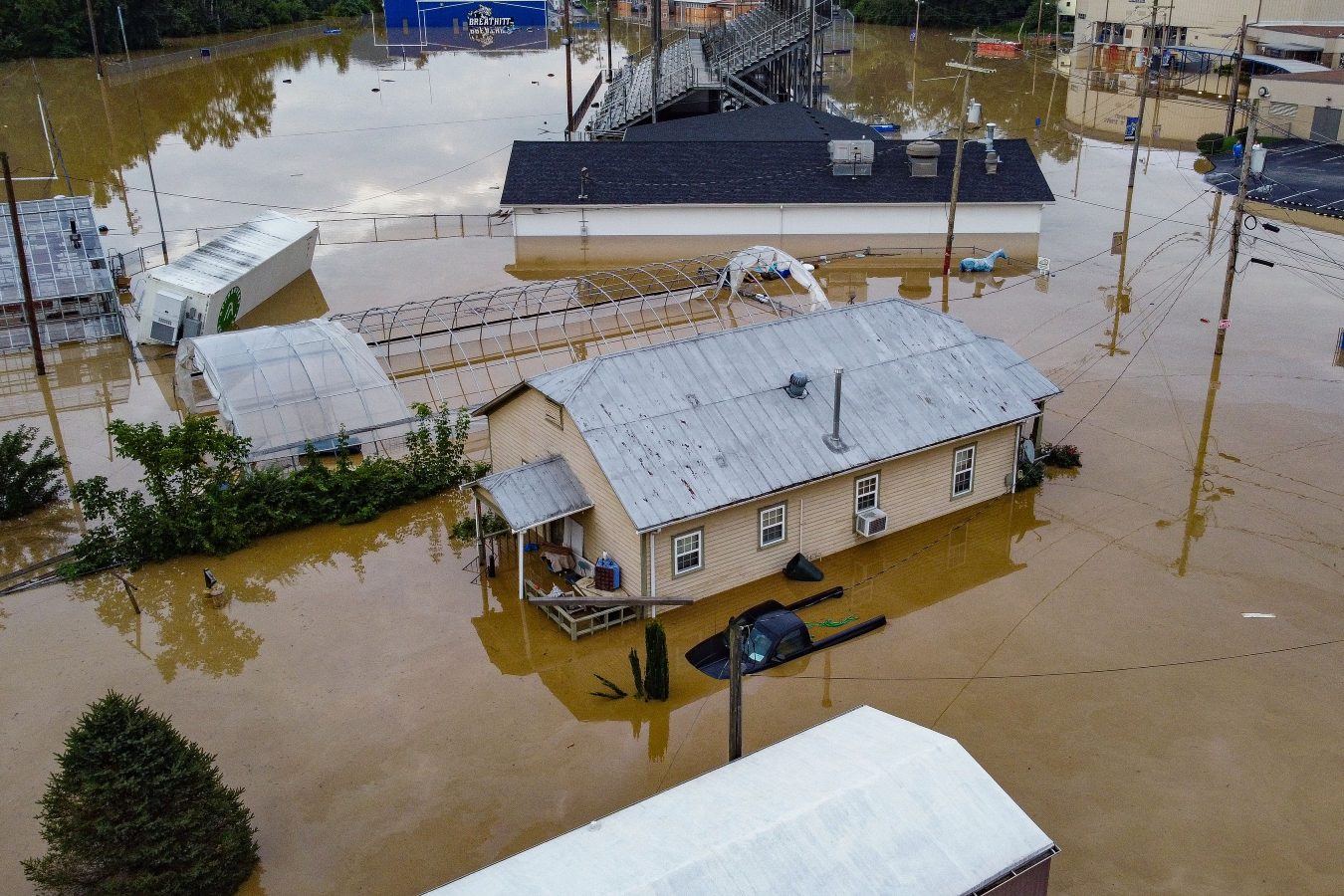Heavy rain has once again brought flash floods to eastern Kentucky, a region still reeling from last summer’s deadly inundations — which social justice advocates say were exacerbated by the environmental destruction wrought by decades of strip mining.
At least one person died in the latest torrents, which followed a storm that dropped more than 3 inches of rain on some communities beginning Thursday. Rising water stranded motorists, prompted road closures, and led to several rescues. It was an eerie reminder of last summer’s deluges, which caused historically high waters, led to the deaths of dozens of residents, and damaged thousands of homes.
Social justice and environmental groups in Kentucky say those impacts were aggravated by the state’s long history of strip mining and lax oversight of an industry with no regard for the damage they’ve wrought or accountability to the communities dealing with the long-term consequences.
Last week, the social justice organization Kentuckians for the Commonwealth sent a letter to the U.S. Interior Department requesting a review of the effectiveness of regulations governing strip mining that go back nearly 50 years. The group says it has gathered evidence showing a correlation between 36 of the 43 verified drowning deaths and their location downstream from large-scale strip mines at the head of local valleys.
The organization wants the Office of Surface Mining and Reclamation, a branch of the Interior Department, to launch an investigation into how the state’s actions — and inactions — to enforce surface mine regulations contributed to the high death toll. The letter also notest that, according to the American Red Cross, the flooding damaged or destroyed more than 1,600 homes.
Steve Peake lives in the eastern Kentucky town of Fleming-Neon, which sits downstream of several abandoned strip-mining sites. His home was heavily damaged last summer as torrential rains battered the region, causing the creek adjacent to his home to overrun its banks and flood his property beneath nearly two feet of water.
“I’m 70 years old and never seen anything like that,” he told Grist. “In all my years we’ve had floods, I guess five or six floods, but the water never got out of the bank.” It took volunteers from around the country two days to clear the mud and water from his home.
Eastern Kentucky has a long and complex relationship with the coal industry. While few coal mining companies still operate there, the landscape bears the scars of strip mining, which carved away many of the mountain ridges at the head of populated valleys, leaving thousands of acres of land devoid of trees and healthy topsoil. That allows heavy rain to rush down the slopes toward the communities below. According to Kentuckians for the Commonwealth, many of the towns most heavily impacted by last summer’s floods are located where strip mining activity was most prominent.
Over a century ago, following the discovery of coal in Kentucky and the broader Appalachian region, speculators traveled through the region with broad form deeds — legal documents that allowed the deed holder to extract mineral resources from beneath a parcel of land — and convinced many residents to sign them. That effectively severed landowners’ relationships to any mineral riches beneath the surface of their property.
Yet coal mine operators were not legally bound to restore the land, either by replanting trees or replacing the topsoil, nor obligated to compensate landowners for property damage caused by the extraction of coal. In the 1960s, as strip mining technology developed, Kentucky courts further cemented the privileges of mining holders by granting them the right to extract coal through any method they deemed appropriate.
Organizations like Kentuckians for the Commonwealth have for nearly 50 years fought for stronger regulation of the mining industry and its environmental impacts, but have made little headway since 1977, when President Jimmy Carter signed the federal Surface Mine Control and Reclamation Act. The law reiterated the importance of underground coal mining in meeting the nation’s energy needs at the time, but also took steps to regulate and inspect coal mines and acknowledged the inherent hazards they posed to the environment and communities. The law required mining companies to restore land to its approximate original state after extracting the resource.
But enforcement was left to the states. Activists and former regulators say state authorities have been far too lenient in holding mining companies accountable for the environmental damage they’ve wrought and its lingering impacts.
“The mining operators walk away, and years later there’s erosion and it’s nobody’s fault,” Davie Ransdell, a former state mine inspector in Kentucky, told Grist.
Peake put it even more plainly, saying, “They don’t plant trees or anything to hold the soil back.” Those responsible for the damage to his community, and his home, are long gone, leaving him to deal with the mess. He tries not to get too nervous when the forecast calls for storms, even as he monitors the flood warnings issued by local radio stations and worries about his 27-year-old daughter, who has Downs syndrome.
“She’s looking out the window,” he said, “and wondering if it’s going to start raining.”




